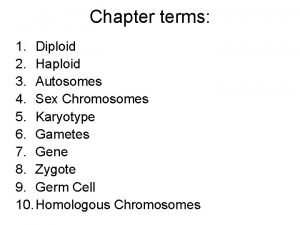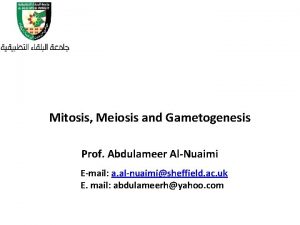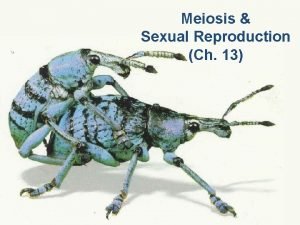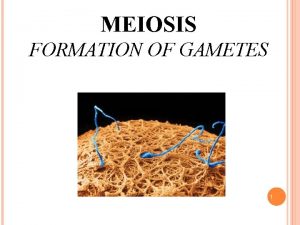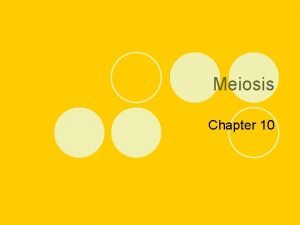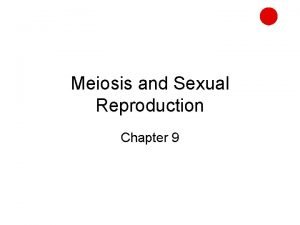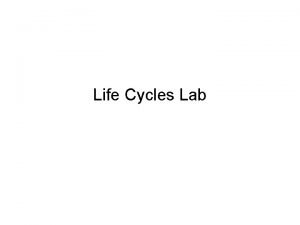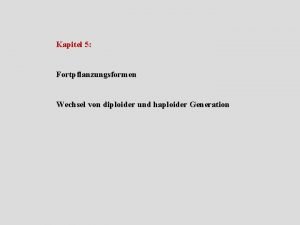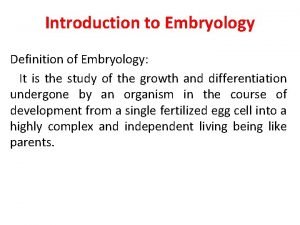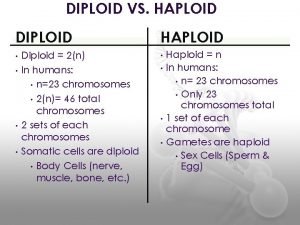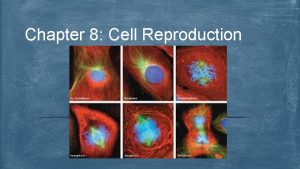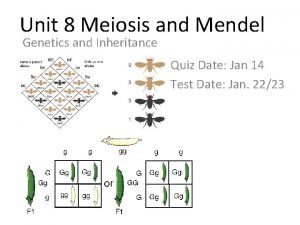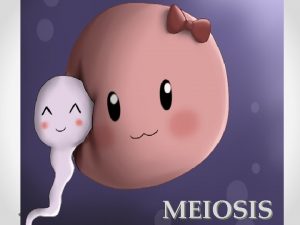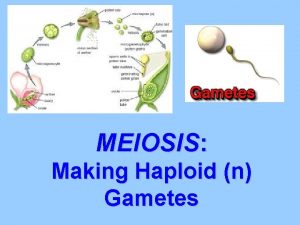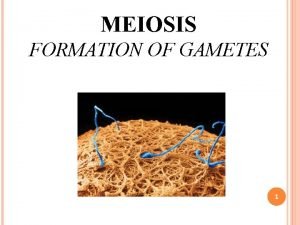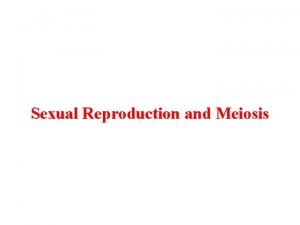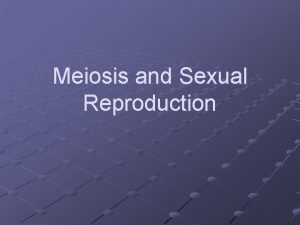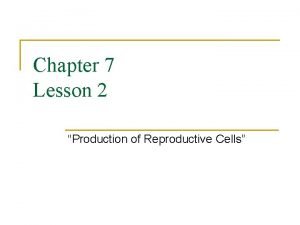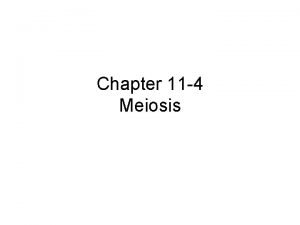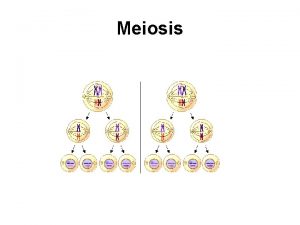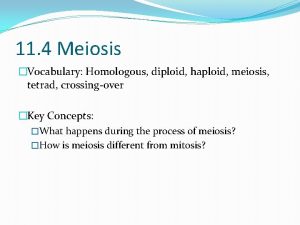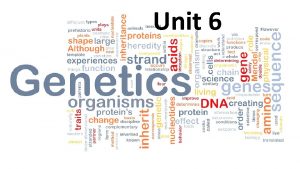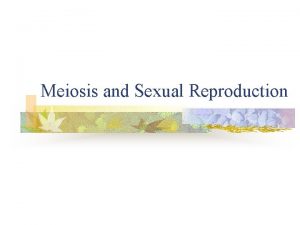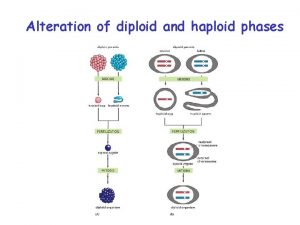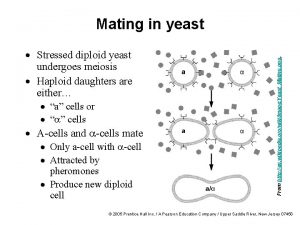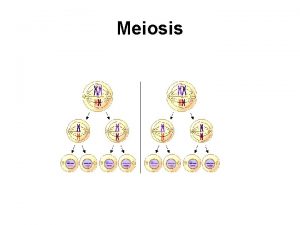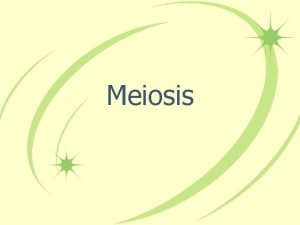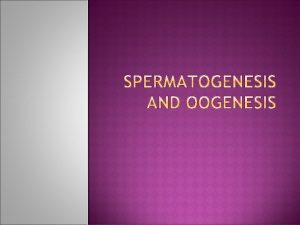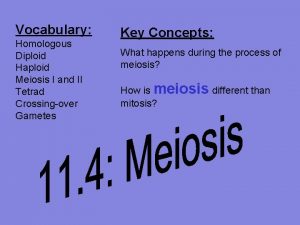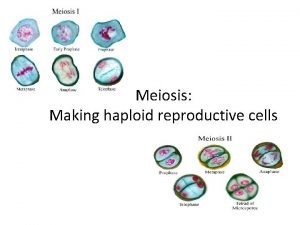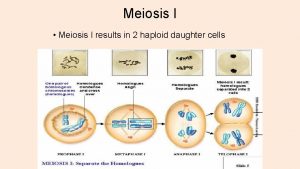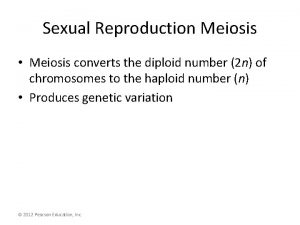Meiosis Chapter 10 Section 2 Diploid Haploid Cells






















- Slides: 22

Meiosis Chapter 10, Section 2

Diploid & Haploid Cells Diploid = a cell with two sets of chromosomes, 2 n, somatic (body) cells muscle, skin, liver, etc. Haploid = a cell with one set of chromosomes, gametes, 1 n, sperm and eggs Meiosis forms haploid gametes required for sexual reproduction Meiosis has 2 stages – Meiosis II

Interphase and stages of mitosis

Chromosomes from metaphase stage of mitosis

Below are chromosomes after they split into chromatids during (telophase) of mitosis

MEIOSIS I Separation of homologous pairs Homologous Pair = in a diploid cell the 2 sets of chromosomes pair up

1. Prophase I DNA coils into chromosomes Nuclear envelope & nucleolus break down Synapsis = homologous chromosomes pair up into tetrads Crossing-over = homologous pairs switch pieces of their chromatids Genetic Recombination = maternal & paternal genetic info get shuffled during crossing-over


2. Metaphase I Tetrads line up in the middle of the cell Spindle fibers attach at the centromeres of each homologous chromosome


3. Anaphase I Each homologous chromosome moves to the opposite end of the cell Independent Assortment = random separation of chromosomes, allows for genetic variation


4. Telophase I & Cytokinesis I Two newly formed cells are haploid Each chromosome is still made up of two chromatids


MEIOSIS II Separation of sister chromatids Sister Chromatids = identical halves of a chromosome that has been duplicated

5. Prophase II 2 newly created cells from Meiosis I start to divide

6. Metaphase II Chromosomes line up in the center

7. Anaphase II Sister Chromatids separate

8. Telophase II & Cytokinesis II 4 new cells, each with half the number of chromosomes of the original cell

Development of Gametes Spermatogenesis = production of sperm cells Oogenesis = production of mature egg cells

Nondisjunction = failure of homologous pairs to separate in Meiosis I If an organism survives, it may have a genetic disorder

Polyploidy Polyploid = organisms with more than the usual number of chromosome sets Occurs frequently in plants, results in plants that are larger than normal
 Why is meiosis important?
Why is meiosis important? Two haploid cells
Two haploid cells Diploid vs haploid
Diploid vs haploid Primary oocyte haploid or diploid
Primary oocyte haploid or diploid Primary oocyte haploid or diploid
Primary oocyte haploid or diploid Diploiid
Diploiid 3 facts about meiosis
3 facts about meiosis Primary oocyte haploid or diploid
Primary oocyte haploid or diploid Meiosis
Meiosis Salamander
Salamander Haploid diploid unterschied
Haploid diploid unterschied Phases of oogenesis
Phases of oogenesis Haploid vs diploid
Haploid vs diploid Diploid vs haploid number
Diploid vs haploid number Dna structure and replication pogil
Dna structure and replication pogil Genotypic ratio
Genotypic ratio Haploid vs diploid venn diagram
Haploid vs diploid venn diagram Homologous pair vs sister chromatids
Homologous pair vs sister chromatids 2n haploid or diploid
2n haploid or diploid Diploid and haploid
Diploid and haploid Produces haploid cells
Produces haploid cells Homologous chromosome vs sister chromatid
Homologous chromosome vs sister chromatid Telophase def
Telophase def


